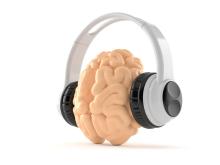User login
Life (and mice) find a way
Apparently we have learned nothing from “Jurassic Park.” This time, though, we might get a world overrun by ... mice? Researchers in China have utilized the complex science of gene editing to help same-sex mice couples bear offspring. This is the first time both female-female and male-male pairs have produced pups (previously, only the female pairs were able to carry to full term) using CRISPR-Cas9. The experiment also served as a study in the relative uselessness of males: All the pups born of male pairs died shortly after birth. Researchers are hopeful to move on to bigger mammals including monkeys, which could eventually turn this “Jurassic Park” adventure into a full-on “Planet of the Apes” nightmare. Best of luck to them!
Hold me closer, tiny robot
Gentleman, we’ve all been put on notice. A team from the University of Exeter in England has taken the next step toward redundancy for the male of the species: robot sperm. Now that we’ve got your attention, take a deep breath and relax. It’s not that bad. The idea is for the robot sperm, or “torque-driven ferromagnetic swimmers,” to be used to deliver drugs, not DNA, the investigators explained. Each millimeter-long device consists “of a magnetic head and flexible tail that allows them to ‘swim’ to a specific location when activated by a magnetic field,” they said. “Developing this technology could radically change the way we do medicine. The swimmers could one day be used to direct drugs to the right areas of the body by swimming through blood vessels,” senior investigator Feodor Ogrin said. So, it looks like it’s going to be okay for men after all. Still, we have to wonder, how long will it be before Siri and Alexa try to make a withdrawal from the robot sperm bank?
Eavesdropping on the brain
Does this count as mind reading? A team of scientists and clinicians from the University of Cambridge has created a new method of testing brain function after tumor removal. The current method of running through cognitive tests while a patient is awake and the brain is exposed is painless (albeit objectively horrifying) but can be risky, and the current cognitive tests can be limited. This new approach is much safer – everyone wears protective gloves and gently massages the brain while singing “Kumbaya” ... Just kidding. Clinicians actually use MRI to examine the brain before surgery and determine how different regions of that ball of gray matter communicate with each other. A 3D-printed model of the patient’s brain is also provided, both as a handy 3D map and a fun souvenir! Because that’s what the world of medicine is missing: a gift shop.
Cannabinoids. Period.
When other medical news columns go high, we go low. How anatomically low? “Cannabis-infused vaginal suppositories.” Those of you about to be made reproductively moot by robot sperm and CRISPR-Cas9 should stop with the junior-high smirking. Because our more mature readers may be interested in an upcoming study. Foria Wellness is ready to put its cannabinoid-infused menstrual pain relief product, Foria Relief, to the test this fall in an observational study of 400 women. The suppositories deliver 60 mg of tetrahydrocannabinol and 10 mg of cannabidiol to their target. The company claims it’s a natural, side-effect–free analgesic alternative to hormonal birth control, ibuprofen, and opioids. And unlike unsuppositoried cannabinoid pain products that waft from place to place around a user’s system, Foria Relief promises sustained focus on its specific task. A quality that smirking junior-high types often lack.
Life (and mice) find a way
Apparently we have learned nothing from “Jurassic Park.” This time, though, we might get a world overrun by ... mice? Researchers in China have utilized the complex science of gene editing to help same-sex mice couples bear offspring. This is the first time both female-female and male-male pairs have produced pups (previously, only the female pairs were able to carry to full term) using CRISPR-Cas9. The experiment also served as a study in the relative uselessness of males: All the pups born of male pairs died shortly after birth. Researchers are hopeful to move on to bigger mammals including monkeys, which could eventually turn this “Jurassic Park” adventure into a full-on “Planet of the Apes” nightmare. Best of luck to them!
Hold me closer, tiny robot
Gentleman, we’ve all been put on notice. A team from the University of Exeter in England has taken the next step toward redundancy for the male of the species: robot sperm. Now that we’ve got your attention, take a deep breath and relax. It’s not that bad. The idea is for the robot sperm, or “torque-driven ferromagnetic swimmers,” to be used to deliver drugs, not DNA, the investigators explained. Each millimeter-long device consists “of a magnetic head and flexible tail that allows them to ‘swim’ to a specific location when activated by a magnetic field,” they said. “Developing this technology could radically change the way we do medicine. The swimmers could one day be used to direct drugs to the right areas of the body by swimming through blood vessels,” senior investigator Feodor Ogrin said. So, it looks like it’s going to be okay for men after all. Still, we have to wonder, how long will it be before Siri and Alexa try to make a withdrawal from the robot sperm bank?
Eavesdropping on the brain
Does this count as mind reading? A team of scientists and clinicians from the University of Cambridge has created a new method of testing brain function after tumor removal. The current method of running through cognitive tests while a patient is awake and the brain is exposed is painless (albeit objectively horrifying) but can be risky, and the current cognitive tests can be limited. This new approach is much safer – everyone wears protective gloves and gently massages the brain while singing “Kumbaya” ... Just kidding. Clinicians actually use MRI to examine the brain before surgery and determine how different regions of that ball of gray matter communicate with each other. A 3D-printed model of the patient’s brain is also provided, both as a handy 3D map and a fun souvenir! Because that’s what the world of medicine is missing: a gift shop.
Cannabinoids. Period.
When other medical news columns go high, we go low. How anatomically low? “Cannabis-infused vaginal suppositories.” Those of you about to be made reproductively moot by robot sperm and CRISPR-Cas9 should stop with the junior-high smirking. Because our more mature readers may be interested in an upcoming study. Foria Wellness is ready to put its cannabinoid-infused menstrual pain relief product, Foria Relief, to the test this fall in an observational study of 400 women. The suppositories deliver 60 mg of tetrahydrocannabinol and 10 mg of cannabidiol to their target. The company claims it’s a natural, side-effect–free analgesic alternative to hormonal birth control, ibuprofen, and opioids. And unlike unsuppositoried cannabinoid pain products that waft from place to place around a user’s system, Foria Relief promises sustained focus on its specific task. A quality that smirking junior-high types often lack.
Life (and mice) find a way
Apparently we have learned nothing from “Jurassic Park.” This time, though, we might get a world overrun by ... mice? Researchers in China have utilized the complex science of gene editing to help same-sex mice couples bear offspring. This is the first time both female-female and male-male pairs have produced pups (previously, only the female pairs were able to carry to full term) using CRISPR-Cas9. The experiment also served as a study in the relative uselessness of males: All the pups born of male pairs died shortly after birth. Researchers are hopeful to move on to bigger mammals including monkeys, which could eventually turn this “Jurassic Park” adventure into a full-on “Planet of the Apes” nightmare. Best of luck to them!
Hold me closer, tiny robot
Gentleman, we’ve all been put on notice. A team from the University of Exeter in England has taken the next step toward redundancy for the male of the species: robot sperm. Now that we’ve got your attention, take a deep breath and relax. It’s not that bad. The idea is for the robot sperm, or “torque-driven ferromagnetic swimmers,” to be used to deliver drugs, not DNA, the investigators explained. Each millimeter-long device consists “of a magnetic head and flexible tail that allows them to ‘swim’ to a specific location when activated by a magnetic field,” they said. “Developing this technology could radically change the way we do medicine. The swimmers could one day be used to direct drugs to the right areas of the body by swimming through blood vessels,” senior investigator Feodor Ogrin said. So, it looks like it’s going to be okay for men after all. Still, we have to wonder, how long will it be before Siri and Alexa try to make a withdrawal from the robot sperm bank?
Eavesdropping on the brain
Does this count as mind reading? A team of scientists and clinicians from the University of Cambridge has created a new method of testing brain function after tumor removal. The current method of running through cognitive tests while a patient is awake and the brain is exposed is painless (albeit objectively horrifying) but can be risky, and the current cognitive tests can be limited. This new approach is much safer – everyone wears protective gloves and gently massages the brain while singing “Kumbaya” ... Just kidding. Clinicians actually use MRI to examine the brain before surgery and determine how different regions of that ball of gray matter communicate with each other. A 3D-printed model of the patient’s brain is also provided, both as a handy 3D map and a fun souvenir! Because that’s what the world of medicine is missing: a gift shop.
Cannabinoids. Period.
When other medical news columns go high, we go low. How anatomically low? “Cannabis-infused vaginal suppositories.” Those of you about to be made reproductively moot by robot sperm and CRISPR-Cas9 should stop with the junior-high smirking. Because our more mature readers may be interested in an upcoming study. Foria Wellness is ready to put its cannabinoid-infused menstrual pain relief product, Foria Relief, to the test this fall in an observational study of 400 women. The suppositories deliver 60 mg of tetrahydrocannabinol and 10 mg of cannabidiol to their target. The company claims it’s a natural, side-effect–free analgesic alternative to hormonal birth control, ibuprofen, and opioids. And unlike unsuppositoried cannabinoid pain products that waft from place to place around a user’s system, Foria Relief promises sustained focus on its specific task. A quality that smirking junior-high types often lack.




